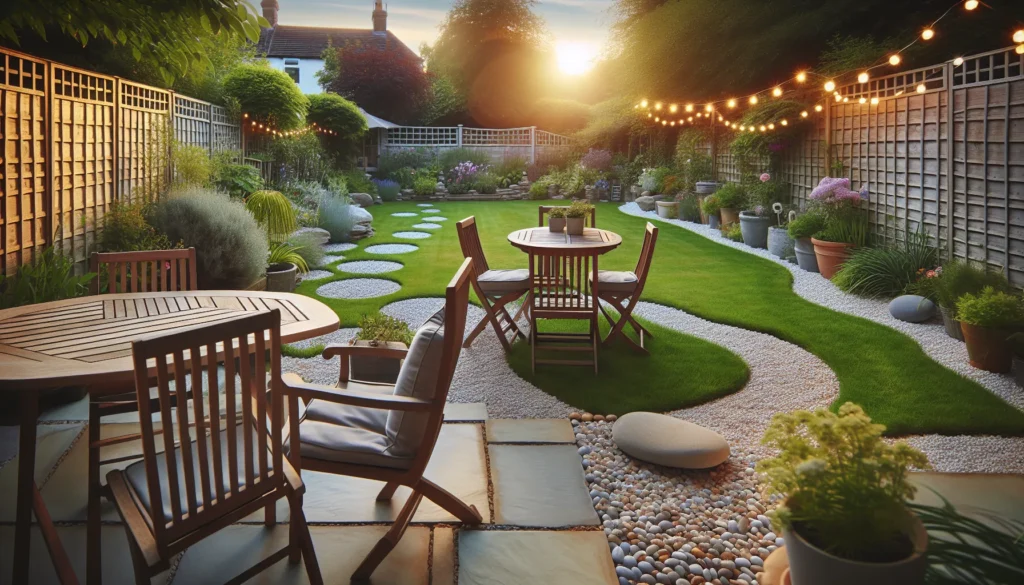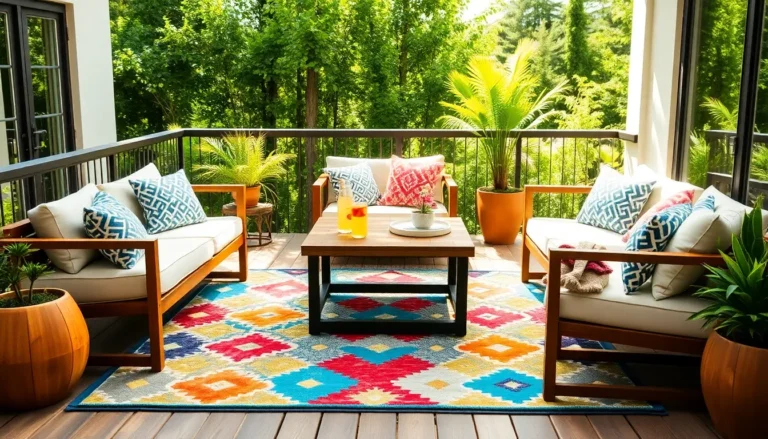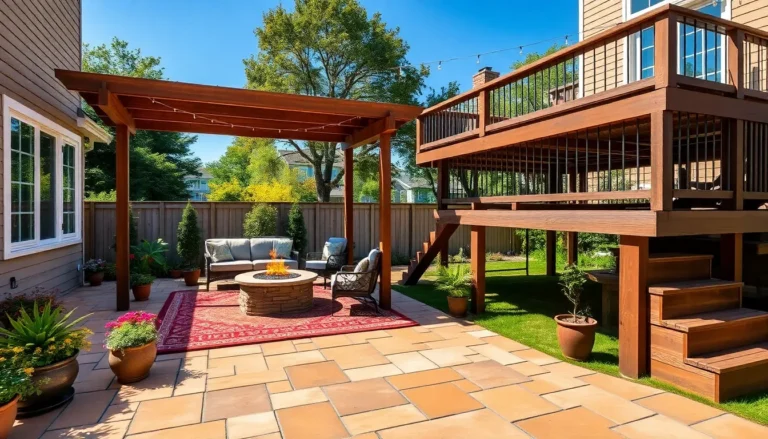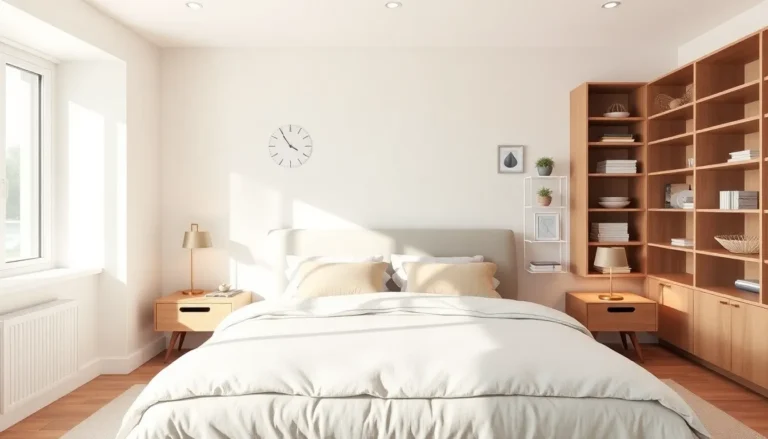Table of Contents
ToggleImagine transforming your backyard into a chic outdoor retreat without breaking the bank. Enter the gravel patio—where style meets simplicity and your dreams of a perfect hangout spot come true. With its rustic charm and low maintenance, a gravel patio is like the cool cousin of traditional patios, always ready to impress guests and make your neighbors a tad jealous.
Gravel patios not only offer a unique aesthetic but also provide excellent drainage and versatility. Whether you want to host summer barbecues or create a cozy nook for stargazing, gravel has got you covered. Plus, it’s an eco-friendly choice that’s as easy on the wallet as it is on the eyes. So why not dig into the world of gravel patios and discover how they can elevate your outdoor space into a stylish sanctuary?
Overview of Gravel Patios
Gravel patios offer an attractive option for outdoor spaces. They’re easy to install, making them accessible for DIY enthusiasts. Cost-effectiveness plays a major role in their popularity, allowing homeowners to create beautiful areas without significant financial investment.
Natural drainage from gravel ensures water doesn’t pool, preventing muddy messes after rain. Versatility stands out, as these patios can accommodate furniture, fire pits, or garden beds. Furthermore, the variety of gravel types provides endless design possibilities, from smooth pebbles to crushed stone.
Maintenance remains manageable, requiring occasional raking to maintain an even surface. In addition, gravel patios blend seamlessly with various landscaping styles, complementing both modern and rustic designs.
Environmental benefits also make gravel patios appealing. They permit rainwater to permeate, reducing runoff and aiding local ecosystems. Choosing gravel over traditional hardscapes helps promote sustainable landscaping practices, supporting eco-friendly initiatives.
Enhancing functionality, gravel patios can serve multiple purposes, such as hosting family gatherings or providing a peaceful reading nook. Customization options include borders made of wood or stone, further personalizing the space.
Ultimately, gravel patios create inviting areas that enhance the overall look of a backyard while accommodating diverse outdoor activities. They fulfill practical needs while delivering aesthetic value.
Benefits of Gravel Patios
Gravel patios offer numerous advantages, making them a popular choice for outdoor spaces. Their charm and practicality appeal to homeowners seeking aesthetic and functional solutions.
Cost-Effectiveness
Building a gravel patio ranks among the most budget-friendly outdoor options. Minimal materials mean lower installation costs when compared to traditional pavers or concrete. Homeowners can achieve a beautiful space without overspending. Labor costs decrease significantly, allowing many people to handle installation themselves. Savings on maintenance also contribute, as gravel patios typically incur fewer long-term costs. Ultimately, these factors make gravel a smart investment for a stylish outdoor retreat.
Low Maintenance
Maintaining a gravel patio remains straightforward and manageable. Occasional raking keeps the surface even and tidy. Unlike concrete, which may require sealing, gravel requires little upkeep to remain functional. Weeds can be easily controlled through regular maintenance, preventing significant issues. The natural drainage properties of gravel minimize erosion, adding durability to the patio. Overall, this low-maintenance aspect appeals to busy homeowners seeking leisure rather than labor.
Versatility in Design
Gravel patios offer a myriad of design possibilities. Homeowners can choose from various gravel types, allowing customization based on personal taste. Options like smooth pebbles or crushed stone enhance the aesthetic appeal of outdoor spaces. Mixing different colors and textures can create unique patterns tailored to one’s preferences. The adaptability of gravel also extends to furniture placement, accommodating everything from fire pits to dining sets. Tailoring the patio to fit diverse activities ensures that each space remains inviting and functional.
Considerations Before Installation
Consider several factors before installing a gravel patio. Selecting the right drainage and soil type plays a crucial role in the longevity and functionality of the patio. Gravel allows water to drain through, preventing puddles. However, clay soil can lead to poor drainage. To ensure proper support, compactable subsoils or sandy soils work best. Check the existing landscape and amend it if necessary to improve drainage.
Climate and weather conditions also affect gravel patio installation. For instance, in areas with heavy rainfall, choosing a higher-quality gravel size enhances drainage and minimizes erosion. Conversely, regions experiencing extreme heat may require larger stones to avoid shifting and sinking. Consider seasonal variations and how they impact the patio’s durability and usability. Understanding local climate patterns supports informed decisions during the installation process, enhancing the outdoor space for year-round enjoyment.
Installation Process
Creating a gravel patio involves several key steps to ensure lasting beauty and functionality. Follow these guidelines to achieve a successful installation.
Preparing the Site
Start by selecting the location for the patio, ensuring it’s away from large trees to minimize debris. Clear away any grass, weeds, or debris from the area, exposing the soil. Dig down about 4 to 6 inches to create enough depth for gravel layers. Next, compact the soil thoroughly to establish a stable base, preventing future sinking. Installing edging material, such as treated wood or steel, helps maintain the shape of the gravel patio. Ensuring proper drainage away from structures is crucial for long-term performance.
Choosing the Right Gravel
Selecting gravel types affects the patio’s aesthetic and functionality. Crushed stone offers a solid base, while smooth pebbles provide a more refined look. Consider colors and textures that complement the existing landscape. For a durable surface, aim for gravel sizes between 3/8 inch and ¾ inch. Flattish shapes are ideal for stability and comfort. Local suppliers can provide samples to assist with choices. Evaluating gravel quality ensures proper drainage and prevents compaction issues.
Laying the Gravel
Spread the gravel evenly across the prepared area, creating a uniform layer of about 2 to 3 inches. Using a rake simplifies the leveling process and ensures consistent coverage. Compact the gravel with a plate compactor or by walking on it to enhance stability. Adding a second layer of finer gravel creates a more polished surface. Bordering the patio with another material keeps gravel in place and adds visual interest. Regular checks on the evenness of the surface throughout the process maintain a professional finish.
Design Ideas for Gravel Patios
Gravel patios offer numerous design opportunities to enhance outdoor spaces. Homeowners often seek creative ways to personalize these areas, ensuring they match their aesthetic preferences and functional needs.
Incorporating Plants and Borders
Integrating plants into a gravel patio adds life and color. Many homeowners choose low-maintenance plants like succulents or ornamental grasses for this purpose. Using container gardens is effective for minimal disruption to the gravel surface. Borders created from wood, stone, or metal define the patio’s edges, enhancing its visual appeal while keeping gravel contained. Additionally, plants can soften the patio’s edges, creating a seamless transition between the hard surface and surrounding landscape. Overall, plants and borders elevate the patio’s atmosphere and invite a more engaging outdoor experience.
Creating Patterns
Crafting patterns with gravel allows for innovative designs. Homeowners can mix different gravel sizes or colors to form unique shapes and lines, adding personal flair. Curved pathways created by varying gravel placements guide the eye and enhance movement through the space. Consider using larger stones to outline specific areas, making them stand out. Contrasting hues can create eye-catching designs that draw attention. Patterns not only add visual interest but also contribute to the overall functionality of the patio, ensuring each segment serves a purpose.
Gravel patios stand out as a practical and stylish choice for any outdoor space. Their affordability and low maintenance make them accessible for homeowners looking to enhance their backyards. With various design possibilities and eco-friendly benefits, gravel patios not only improve aesthetics but also support sustainable landscaping practices.
By selecting the appropriate materials and considering local climate conditions, homeowners can create a durable and functional retreat. Whether hosting gatherings or enjoying quiet moments outdoors, gravel patios offer a versatile solution that meets diverse needs. Ultimately, they can transform any yard into an inviting sanctuary that reflects personal style and enhances outdoor living.







